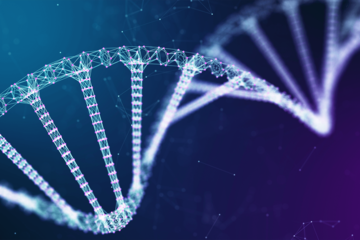We found 38 results that contain "mathematical analysis"
Posted on: #iteachmsu


Playlist-- Boundary Value Analysis (BVA)
Boundary value analysis is based on testing at the boundaries between partitions. It includes maximum, minimum, inside or outside boundaries, typical values and error values.
It is generally seen that a large number of errors occur at the boundaries of the defined input values rather than the center. It is also known as BVA and gives a selection of test cases which exercise bounding values.
This black box testing technique complements equivalence partitioning. This software testing technique base on the principle that, if a system works well for these particular values then it will work perfectly well for all values which comes between the two boundary values.
Guidelines for Boundary Value analysis
If an input condition is restricted between values x and y, then the test cases should be designed with values x and y as well as values which are above and below x and y.
If an input condition is a large number of values, the test case should be developed which need to exercise the minimum and maximum numbers. Here, values above and below the minimum and maximum values are also tested.
Apply guidelines 1 and 2 to output conditions. It gives an output which reflects the minimum and the maximum values expected. It also tests the below or above values.
It is generally seen that a large number of errors occur at the boundaries of the defined input values rather than the center. It is also known as BVA and gives a selection of test cases which exercise bounding values.
This black box testing technique complements equivalence partitioning. This software testing technique base on the principle that, if a system works well for these particular values then it will work perfectly well for all values which comes between the two boundary values.
Guidelines for Boundary Value analysis
If an input condition is restricted between values x and y, then the test cases should be designed with values x and y as well as values which are above and below x and y.
If an input condition is a large number of values, the test case should be developed which need to exercise the minimum and maximum numbers. Here, values above and below the minimum and maximum values are also tested.
Apply guidelines 1 and 2 to output conditions. It gives an output which reflects the minimum and the maximum values expected. It also tests the below or above values.
Posted on: #iteachmsu


Sentiment analysis for product rating
This project aims to develop a sentiment analysis system for product rating. It is an e-commerce web application. The main goal of this sentiment analysis system is to understand the hidden sentiments of customers in feedback and comments and analyze their product rating patterns.
PEDAGOGICAL DESIGN
Posted on: #iteachmsu


Dynamic ecological system measures: A holistic analysis of compartmental systems
The system decomposition theory has recently been developed for the dynamic analysis of nonlinear compartmental systems. The application of this theory to the ecosystem analysis has also been introduced in a separate article. Based on this methodology, multiple new dynamic ecological system measures and indices of matrix, vector, and scalar types are systematically introduced in the present paper. These mathematical system analysis tools are quantitative ecological indicators that monitor the flow distribution and storage organization, quantify the direct, indirect, acyclic, cycling, and transfer (diact) effects and utilities of one compartment on another, identify the system efficiencies and stress, measure the compartmental exposures to system flows, determine the residence times and compartmental activity levels, and ascertain the system resilience and resistance in the case of disturbances. The proposed dynamic system measures and indices, thus, extract detailed information about ecosystems’ characteristics, as well as their functions, properties, behaviors, and various other system attributes that are potentially hidden in and even obscured by data. A dynamic technique for the quantitative characterization and classification of main interspecific interactions and the determination of their strength within food webs is also developed based on the diact effect and utility indices. Moreover, major concepts and quantities in the current static network analyses are also extended to nonlinear dynamic settings and integrated with the proposed dynamic measures and indices in this unifying mathematical framework. Therefore, the proposed methodology enables a holistic view and analysis of ecological systems. We consider that the proposed methodology brings a novel complex system theory to the service of urgent and challenging environmental problems of the day and has the potential to lead the way to a more formalistic ecological science.
NAVIGATING CONTEXT
Posted on: #iteachmsu


Before spectroscopic analysis (IR, NMR) became commonplace in the organic chemistry lab
Before spectroscopic analysis (IR, NMR) became commonplace in the organic chemistry lab, chemical tests were heavily relied upon to support compound identification. A chemical test is typically a fast reaction performed in a test tube that gives a dramatic visual clue (a color change, precipitate, or gas formation) as evidence for a chemical reaction. For example, addition of an orange chromic acid reagent to some compounds causes the chromium reagent to change to a blue-green color (Figure 6.37a). This is considered a "positive" test result, and in this case indicates the presence of a functional group that can be oxidized (alcohol or aldehyde). A negative test result is retention of the original color of the reagent, in this case the orange color
https://chem.libretexts.org/Bookshelves/Organic_Chemistry/Book%3A_Organic_Chemistry_Lab_Techniques_(Nichols)/06%3A_Miscellaneous_Techniques/6.04%3A_Chemical_Tests/6.4A%3A_Overview_of_Chemical_Tests
https://chem.libretexts.org/Bookshelves/Organic_Chemistry/Book%3A_Organic_Chemistry_Lab_Techniques_(Nichols)/06%3A_Miscellaneous_Techniques/6.04%3A_Chemical_Tests/6.4A%3A_Overview_of_Chemical_Tests
Posted by: Chathuri Super admin..
Navigating Context
Posted on: #iteachmsu


computer science
Computer science focuses on the development and testing of software and software systems. It involves working with mathematical models, data analysis and security, algorithms, and computational theory. Computer scientists define the computational principles that are the basis of all software.
Posted by: Super Admin
Posted on: #iteachmsu


Are there any advances in this direction that you think hold promise?
The basic idea of intelligence:An explosion is that once machines reach a certain level of intelligence, they’ll be able to work on AI just like we do and improve their own capabilities — redesign their own hardware and so on — and their intelligence will zoom off the charts. There’s an area emerging called “cyber-physical systems” about systems that couple computers to the real world. With a cyber-physical system, you’ve got a bunch of bits representing an air traffic control program, and then you’ve got some real airplanes, and what you care about is that no airplanes collide. You’re trying to prove a theorem about the combination of the bits and the physical world. What you would do is write a very conservative mathematical description of the physical world — airplanes can accelerate within such-and-such envelope — and your theorems would still be true in the real world as long as the real world is somewhere inside the envelope of behaviors.
Yet you’ve pointed out that it might not be mathematically possible to formally verify AI systems.
There’s a general problem of “undecidability” in a lot of questions you can ask about computer programs. Alan Turing showed that no computer program can decide whether any other possible program will eventually terminate and output an answer or get stuck in an infinite loop. So if you start out with one program, but it could rewrite itself to be any other program, then you have a problem, because you can’t prove that all possible other programs would satisfy some property.
Yet you’ve pointed out that it might not be mathematically possible to formally verify AI systems.
There’s a general problem of “undecidability” in a lot of questions you can ask about computer programs. Alan Turing showed that no computer program can decide whether any other possible program will eventually terminate and output an answer or get stuck in an infinite loop. So if you start out with one program, but it could rewrite itself to be any other program, then you have a problem, because you can’t prove that all possible other programs would satisfy some property.
Authored by: Rupali
Assessing Learning
Posted on: #iteachmsu

GA Art
Summary
Deep learning is the new state-of-the-art for artificial intelligence. Deep learning architecture is composed of an input layer, hidden layers, and an output layer. The word deep means there are more than two fully connected layers.
There is a vast amount of neural network, where each architecture is designed to perform a given task. For instance, CNN works very well with pictures, RNN provides impressive results with time series and text analysis.
Deep learning is the new state-of-the-art for artificial intelligence. Deep learning architecture is composed of an input layer, hidden layers, and an output layer. The word deep means there are more than two fully connected layers.
There is a vast amount of neural network, where each architecture is designed to perform a given task. For instance, CNN works very well with pictures, RNN provides impressive results with time series and text analysis.
Authored by: Jagruti Joshi
Posted on: #iteachmsu


Strategic Management - Meaning and Important Concepts
Strategic Management is all about identification and description of the strategies that managers can carry so as to achieve better performance and a competitive advantage for their organization. An organization is said to have competitive advantage if its profitability is higher than the average profitability for all companies in its industry.
Strategic management can also be defined as a bundle of decisions and acts which a manager undertakes and which decides the result of the firm’s performance. The manager must have a thorough knowledge and analysis of the general and competitive organizational environment so as to take right decisions. They should conduct a SWOT Analysis (Strengths, Weaknesses, Opportunities, and Threats), i.e., they should make best possible utilization of strengths, minimize the organizational weaknesses, make use of arising opportunities from the business environment and shouldn’t ignore the threats.
Strategic Management gives a broader perspective to the employees of an organization and they can better understand how their job fits into the entire organizational plan and how it is co-related to other organizational members. It is nothing but the art of managing
employees in a manner which maximizes the ability of achieving business objectives. The employees become more trustworthy, more committed and more satisfied as they can co-relate themselves very well with each organizational task. They can understand the reaction of environmental changes on the organization and the probable response of the organization with the help of strategic management. Thus the employees can judge the impact of such changes on their own job and can effectively face the changes. The managers and employees must do appropriate things in appropriate manner. They need to be both effective as well as efficient.
Strategic management can also be defined as a bundle of decisions and acts which a manager undertakes and which decides the result of the firm’s performance. The manager must have a thorough knowledge and analysis of the general and competitive organizational environment so as to take right decisions. They should conduct a SWOT Analysis (Strengths, Weaknesses, Opportunities, and Threats), i.e., they should make best possible utilization of strengths, minimize the organizational weaknesses, make use of arising opportunities from the business environment and shouldn’t ignore the threats.
Strategic Management gives a broader perspective to the employees of an organization and they can better understand how their job fits into the entire organizational plan and how it is co-related to other organizational members. It is nothing but the art of managing
employees in a manner which maximizes the ability of achieving business objectives. The employees become more trustworthy, more committed and more satisfied as they can co-relate themselves very well with each organizational task. They can understand the reaction of environmental changes on the organization and the probable response of the organization with the help of strategic management. Thus the employees can judge the impact of such changes on their own job and can effectively face the changes. The managers and employees must do appropriate things in appropriate manner. They need to be both effective as well as efficient.
Posted by: Kalon Locaz
Disciplinary Content
Posted on: #iteachmsu


Business Intelligence and Data Science
Business Intelligence and Data Science are two of the most recurring terms in the digital era. While both of them involve the use of data, they are totally different from one another. Data Science is the bigger pool containing greater information, BI can be thought of as a part of the bigger picture.
What is Business Intelligence?
Business Intelligence is a process of collecting, integrating, analyzing, and presenting the data. With Business Intelligence, executives and managers can have a better understanding of decision-making. This process is carried out through software services and tools.
Using Business Intelligence, organizations are able to several strategic and operational business decisions. Furthermore, BI tools are used for the analysis and creation of reports. They are also used for producing graphs, dashboards, summaries, and charts to help the business executives to make better decisions.
What is Business Intelligence?
Business Intelligence is a process of collecting, integrating, analyzing, and presenting the data. With Business Intelligence, executives and managers can have a better understanding of decision-making. This process is carried out through software services and tools.
Using Business Intelligence, organizations are able to several strategic and operational business decisions. Furthermore, BI tools are used for the analysis and creation of reports. They are also used for producing graphs, dashboards, summaries, and charts to help the business executives to make better decisions.
Authored by: Rupali
Assessing Learning
Posted on: #iteachmsu


Article For Software development life cycle
What is SDLC?
SDLC is a process followed for a software project, within a software organization. It consists of a detailed plan describing how to develop, maintain, replace and alter or enhance specific software. The life cycle defines a methodology for improving the quality of software and the overall development process.
The following figure is a graphical representation of the various stages of a typical SDLC.
A typical Software Development Life Cycle consists of the following stages −
Stage 1: Planning and Requirement Analysis
Requirement analysis is the most important and fundamental stage in SDLC. It is performed by the senior members of the team with inputs from the customer, the sales department, market surveys and domain experts in the industry. This information is then used to plan the basic project approach and to conduct product feasibility study in the economical, operational and technical areas.
Planning for the quality assurance requirements and identification of the risks associated with the project is also done in the planning stage. The outcome of the technical feasibility study is to define the various technical approaches that can be followed to implement the project successfully with minimum risks.
Stage 2: Defining Requirements
Once the requirement analysis is done the next step is to clearly define and document the product requirements and get them approved from the customer or the market analysts. This is done through an SRS (Software Requirement Specification) document which consists of all the product requirements to be designed and developed during the project life cycle.
Stage 3: Designing the Product Architecture
SRS is the reference for product architects to come out with the best architecture for the product to be developed. Based on the requirements specified in SRS, usually more than one design approach for the product architecture is proposed and documented in a DDS - Design Document Specification.
This DDS is reviewed by all the important stakeholders and based on various parameters as risk assessment, product robustness, design modularity, budget and time constraints, the best design approach is selected for the product.
A design approach clearly defines all the architectural modules of the product along with its communication and data flow representation with the external and third party modules (if any). The internal design of all the modules of the proposed architecture should be clearly defined with the minutest of the details in DDS.
Stage 4: Building or Developing the Product
In this stage of SDLC the actual development starts and the product is built. The programming code is generated as per DDS during this stage. If the design is performed in a detailed and organized manner, code generation can be accomplished without much hassle.
Developers must follow the coding guidelines defined by their organization and programming tools like compilers, interpreters, debuggers, etc. are used to generate the code. Different high level programming languages such as C, C++, Pascal, Java and PHP are used for coding. The programming language is chosen with respect to the type of software being developed.
Stage 5: Testing the Product
This stage is usually a subset of all the stages as in the modern SDLC models, the testing activities are mostly involved in all the stages of SDLC. However, this stage refers to the testing only stage of the product where product defects are reported, tracked, fixed and retested, until the product reaches the quality standards defined in the SRS.
Stage 6: Deployment in the Market and Maintenance
Once the product is tested and ready to be deployed it is released formally in the appropriate market. Sometimes product deployment happens in stages as per the business strategy of that organization. The product may first be released in a limited segment and tested in the real business environment (UAT- User acceptance testing).
Then based on the feedback, the product may be released as it is or with suggested enhancements in the targeting market segment. After the product is released in the market, its maintenance is done for the existing customer base.Video link:Embedded video link:Link: https://projects.invisionapp.com/d/main#/console/20294675/458743820/preview
SDLC is a process followed for a software project, within a software organization. It consists of a detailed plan describing how to develop, maintain, replace and alter or enhance specific software. The life cycle defines a methodology for improving the quality of software and the overall development process.
The following figure is a graphical representation of the various stages of a typical SDLC.
A typical Software Development Life Cycle consists of the following stages −
Stage 1: Planning and Requirement Analysis
Requirement analysis is the most important and fundamental stage in SDLC. It is performed by the senior members of the team with inputs from the customer, the sales department, market surveys and domain experts in the industry. This information is then used to plan the basic project approach and to conduct product feasibility study in the economical, operational and technical areas.
Planning for the quality assurance requirements and identification of the risks associated with the project is also done in the planning stage. The outcome of the technical feasibility study is to define the various technical approaches that can be followed to implement the project successfully with minimum risks.
Stage 2: Defining Requirements
Once the requirement analysis is done the next step is to clearly define and document the product requirements and get them approved from the customer or the market analysts. This is done through an SRS (Software Requirement Specification) document which consists of all the product requirements to be designed and developed during the project life cycle.
Stage 3: Designing the Product Architecture
SRS is the reference for product architects to come out with the best architecture for the product to be developed. Based on the requirements specified in SRS, usually more than one design approach for the product architecture is proposed and documented in a DDS - Design Document Specification.
This DDS is reviewed by all the important stakeholders and based on various parameters as risk assessment, product robustness, design modularity, budget and time constraints, the best design approach is selected for the product.
A design approach clearly defines all the architectural modules of the product along with its communication and data flow representation with the external and third party modules (if any). The internal design of all the modules of the proposed architecture should be clearly defined with the minutest of the details in DDS.
Stage 4: Building or Developing the Product
In this stage of SDLC the actual development starts and the product is built. The programming code is generated as per DDS during this stage. If the design is performed in a detailed and organized manner, code generation can be accomplished without much hassle.
Developers must follow the coding guidelines defined by their organization and programming tools like compilers, interpreters, debuggers, etc. are used to generate the code. Different high level programming languages such as C, C++, Pascal, Java and PHP are used for coding. The programming language is chosen with respect to the type of software being developed.
Stage 5: Testing the Product
This stage is usually a subset of all the stages as in the modern SDLC models, the testing activities are mostly involved in all the stages of SDLC. However, this stage refers to the testing only stage of the product where product defects are reported, tracked, fixed and retested, until the product reaches the quality standards defined in the SRS.
Stage 6: Deployment in the Market and Maintenance
Once the product is tested and ready to be deployed it is released formally in the appropriate market. Sometimes product deployment happens in stages as per the business strategy of that organization. The product may first be released in a limited segment and tested in the real business environment (UAT- User acceptance testing).
Then based on the feedback, the product may be released as it is or with suggested enhancements in the targeting market segment. After the product is released in the market, its maintenance is done for the existing customer base.Video link:Embedded video link:Link: https://projects.invisionapp.com/d/main#/console/20294675/458743820/preview
Authored by: Vijayalaxmi vishvanath mali
Navigating Context
Posted on: #iteachmsu

Full blood count
Department of Haematology
Notes
Full blood counts are performed on automated equipment and provide haemoglobin concentration, red cell indices, white cell count (with a differential count) and platelet count.
The presence of abnormal white cell and red cell morphology is flagged by the analysers.
Blood films may be inspected to confirm and interpret abnormalities identified by the cell counter, or to look for certain specific haematological abnormalities.
Grossly abnormal FBC results and abnormal blood films will be phoned through to the requestor.
There is no need to request a blood film to obtain a differential white count. It is, however, important that clinical details are provided to allow the laboratory to decide whether a blood film, in addition to the automated analysis, is required.
Under some circumstances a differential is not routinely performed, e.g. pre-op, post-op, antenatal and postnatal requests.
Full Blood Counts are performed at CGH and GRH
See also: Reticulocyte Count
The FBC comprises the following tests
Standard
Haemoglobin (Hb)
White Blood Count (WBC)
Platelet Count (Plt)
Red Cell Count (RBC)
Haematocrit (HCT)
Mean Cell Volume - Red cell (MCV)
Mean Cell Haemoglobin (MCH)
Differential White Cell Count (where applicable)
Neutrophils
Lymphocytes
Monocytes
Eosinophils
Basophils
And if appropriate
Blood Film
Sample Requirements
2ml or 4ml EDTA sample or a Paediatric 1ml EDTA sample.
Sample Storage and Retention
Pre analysis storage: do not store, send to laboratory within 4 hours.
Sample retention by lab: EDTA samples are retained for a minimum of 48 hours at 2-10°C
Transport of samples may affect sample viability, i.e. FBC results will degenerate if exposed to high temperatures, such as prolonged transportation in a hot car in summer.
This test can be added on to a previous request as long as there is sufficient sample remaining and the sample is less than 24 hours old.
Turnaround Times
Clinical emergency: 30 mins
Other urgent sample: 60 mins
Routine: within 2 hours
Reference Ranges
If references ranges are required for paediatric patients please contact the laboratory for these.
Parameter Patient Reference Range Units Haemoglobin Adult Male 130 - 180 g/L Adult Female 115 - 165 g/L Red Cell Count Adult Male 4.50 - 6.50 x10^12/L Adult Female 3.80 - 5.80 x10^12/L Haematocrit Adult Male 0.40 - 0.54 L/L Adult Female 0.37 - 0.47 L/L Mean Cell Volume Adult 80 - 100 fL Mean Cell Haemoglobin Adult 27 - 32 pg White Cell Count Adult 3.6 - 11.0 x10^9/L Neutrophils Adult 1.8 - 7.5 x10^9/L Lymphocytes Adult 1.0 - 4.0 x10^9/L Monocytes Adult 0.2 - 0.8 x10^9/L Eosinophils Adult 0.1 - 0.4 x10^9/L Basophils Adult 0.02 - 0.10 x10^9/L Platelet Count Adult 140 - 400 x10^9/L
Notes
Full blood counts are performed on automated equipment and provide haemoglobin concentration, red cell indices, white cell count (with a differential count) and platelet count.
The presence of abnormal white cell and red cell morphology is flagged by the analysers.
Blood films may be inspected to confirm and interpret abnormalities identified by the cell counter, or to look for certain specific haematological abnormalities.
Grossly abnormal FBC results and abnormal blood films will be phoned through to the requestor.
There is no need to request a blood film to obtain a differential white count. It is, however, important that clinical details are provided to allow the laboratory to decide whether a blood film, in addition to the automated analysis, is required.
Under some circumstances a differential is not routinely performed, e.g. pre-op, post-op, antenatal and postnatal requests.
Full Blood Counts are performed at CGH and GRH
See also: Reticulocyte Count
The FBC comprises the following tests
Standard
Haemoglobin (Hb)
White Blood Count (WBC)
Platelet Count (Plt)
Red Cell Count (RBC)
Haematocrit (HCT)
Mean Cell Volume - Red cell (MCV)
Mean Cell Haemoglobin (MCH)
Differential White Cell Count (where applicable)
Neutrophils
Lymphocytes
Monocytes
Eosinophils
Basophils
And if appropriate
Blood Film
Sample Requirements
2ml or 4ml EDTA sample or a Paediatric 1ml EDTA sample.
Sample Storage and Retention
Pre analysis storage: do not store, send to laboratory within 4 hours.
Sample retention by lab: EDTA samples are retained for a minimum of 48 hours at 2-10°C
Transport of samples may affect sample viability, i.e. FBC results will degenerate if exposed to high temperatures, such as prolonged transportation in a hot car in summer.
This test can be added on to a previous request as long as there is sufficient sample remaining and the sample is less than 24 hours old.
Turnaround Times
Clinical emergency: 30 mins
Other urgent sample: 60 mins
Routine: within 2 hours
Reference Ranges
If references ranges are required for paediatric patients please contact the laboratory for these.
Parameter Patient Reference Range Units Haemoglobin Adult Male 130 - 180 g/L Adult Female 115 - 165 g/L Red Cell Count Adult Male 4.50 - 6.50 x10^12/L Adult Female 3.80 - 5.80 x10^12/L Haematocrit Adult Male 0.40 - 0.54 L/L Adult Female 0.37 - 0.47 L/L Mean Cell Volume Adult 80 - 100 fL Mean Cell Haemoglobin Adult 27 - 32 pg White Cell Count Adult 3.6 - 11.0 x10^9/L Neutrophils Adult 1.8 - 7.5 x10^9/L Lymphocytes Adult 1.0 - 4.0 x10^9/L Monocytes Adult 0.2 - 0.8 x10^9/L Eosinophils Adult 0.1 - 0.4 x10^9/L Basophils Adult 0.02 - 0.10 x10^9/L Platelet Count Adult 140 - 400 x10^9/L
Authored by: Vijaya
Posted on: #iteachmsu

The uses of formal methods for software and hardware design is motivated by the expectation that, as in other engineering disciplines, performing the appropriate mathematical analysis can contribute to the reliability and robustness of a design. They form an important theoretical underpinning for software engineering, especially where safety or security is involved. Formal methods are a useful adjunct to software testing since they help avoid errors and can also give a framework for testing. For industrial use, tool support is required. However, the high cost of using formal methods means that they are usually only used in the development of high-integrity and life-critical systems, where safety or security is of utmost importance. Formal methods are a particular kind of mathematically based technique for the specification, development, and verification of software and hardware systems.[46] The use of formal methods for software and hardware design is motivated by the expectation that, as in other engineering disciplines, performing the appropriate mathematical analysis can contribute to the reliability and robustness of a design.
Posted by: Rupali Jagtap
Assessing Learning
Posted on: #iteachmsu

A career in Artificial Intelligence requires a strong background in programming, systems analysis, and/or fluency in several computer languages. A bachelor's degree in mathematics, data science, statistics, and computer science can qualify you for entry-level positions in the Artificial Intelligence field.
Posted by: Rupali Jagtap
Assessing Learning
Posted on: #iteachmsu


Artificial intelligence (AI) aims to or is required to synthesize goal-orientated processes such as problem-solving, decision-making, environmental adaptation, learning, and communication found in humans and animals.
https://www.w3.org/TR/UNDERSTANDING-WCAG20/visual-audio-contrast-scale.html
artificial intelligence research has been necessarily cross-disciplinary, drawing on areas of expertise such as applied mathematics, symbolic logic, semiotics, electrical engineering, neurophysiology, and social intelligence.
https://www.w3.org/TR/UNDERSTANDING-WCAG20/visual-audio-contrast-scale.html
artificial intelligence research has been necessarily cross-disciplinary, drawing on areas of expertise such as applied mathematics, symbolic logic, semiotics, electrical engineering, neurophysiology, and social intelligence.
Posted by: Rupali Jagtap
Assessing Learning
Posted on: #iteachmsu

Stages of a typical SDLC.Stage 1: Planning and Requirement Analysis Requirement analysis is the most important and fundamental stage in SDLC. It is performed by the senior members of the team with inputs from the customer, the sales department, market surveys and domain experts in the industry. This information is then used to plan the basic project approach and to conduct product feasibility study in the economical, operational and technical areas. Stages of a typical SDLC.Stage 1: Planning and Requirement Analysis Requirement analysis is the most important and fundamental stage in SDLC. It is performed by the senior members of the team with inputs from the customer, the sales department, market surveys and domain experts in the industry. This information is then used to plan the basic project approach and to conduct product feasibility study in the economical, operational and technical areas.
Posted by: Super Admin
Disciplinary Content
Posted on: #iteachmsu

Stages of a typical SDLC.Stage 1: Planning and Requirement Analysis Requirement analysis is the most important and fundamental stage in SDLC. It is performed by the senior members of the team with inputs from the customer, the sales department, market surveys and domain experts in the industry. This information is then used to plan the basic project approach and to conduct product feasibility study in the economical, operational and technical areas. Stages of a typical SDLC.Stage 1: Planning and Requirement Analysis Requirement analysis is the most important and fundamental stage in SDLC. It is performed by the senior members of the team with inputs from the customer, the sales department, market surveys and domain experts in the industry. This information is then used to plan the basic project approach and to conduct product feasibility study in the economical, operational and technical areas.
Posted by: Super Admin
Disciplinary Content
Posted on: #iteachmsu
![Article preview image]()
Science and technology is a topic that encompasses science, technology, and the interactions between the two. Science is a systematic enterprise that builds and organizes knowledge in the form of explanations and predictions about nature and the universe. Technology is the collection of techniques, methods or processes used in the production of goods or services or in the accomplishment of objectives, such as scientific investigation, or any other consumer demands.
Science may drive technological development, by generating demand for new instruments to address a scientific question, or by illustrating technical possibilities previously unconsidered. In turn, technology may drive scientific investigation, by creating demand for technological improvements that can only be produced through research, and by raising questions about the underlying principles that a new technology relies on.
For the majority of human history, technological improvements were achieved by chance, trial and error, or spontaneous inspiration. When the modern scientific enterprise matured in the Enlightenment, it primarily concerned itself with basic questions of nature. Research and development directed towards immediate technical application is a relatively recent occurrence, arising with the Industrial Revolution and becoming commonplace in the 20th century.
As academic fields, science and technology are often grouped with engineering and mathematics, as the STEM fields.
Science may drive technological development, by generating demand for new instruments to address a scientific question, or by illustrating technical possibilities previously unconsidered. In turn, technology may drive scientific investigation, by creating demand for technological improvements that can only be produced through research, and by raising questions about the underlying principles that a new technology relies on.
For the majority of human history, technological improvements were achieved by chance, trial and error, or spontaneous inspiration. When the modern scientific enterprise matured in the Enlightenment, it primarily concerned itself with basic questions of nature. Research and development directed towards immediate technical application is a relatively recent occurrence, arising with the Industrial Revolution and becoming commonplace in the 20th century.
As academic fields, science and technology are often grouped with engineering and mathematics, as the STEM fields.
Posted by: Chathuri Super admin..
Disciplinary Content
Posted on: #iteachmsu
![Article preview image]()
Science & technology is a topic that encompasses science, technology, and the interactions between the two. Science is a systematic enterprise that builds and organizes knowledge in the form of explanations and predictions about nature and the universe. Technology is the collection of techniques, methods or processes used in the production of goods or services or in the accomplishment of objectives, such as scientific investigation, or any other consumer demands.
Science may drive technological development, by generating demand for new instruments to address a scientific question, or by illustrating technical possibilities previously unconsidered. In turn, technology may drive scientific investigation, by creating demand for technological improvements that can only be produced through research, and by raising questions about the underlying principles that a new technology relies on.
For the majority of human history, technological improvements were achieved by chance, trial and error, or spontaneous inspiration. When the modern scientific enterprise matured in the Enlightenment, it primarily concerned itself with basic questions of nature. Research and development directed towards immediate technical application is a relatively recent occurrence, arising with the Industrial Revolution and becoming commonplace in the 20th century.
As academic fields, science and technology are often grouped with engineering and mathematics, as the STEM fields.
Science may drive technological development, by generating demand for new instruments to address a scientific question, or by illustrating technical possibilities previously unconsidered. In turn, technology may drive scientific investigation, by creating demand for technological improvements that can only be produced through research, and by raising questions about the underlying principles that a new technology relies on.
For the majority of human history, technological improvements were achieved by chance, trial and error, or spontaneous inspiration. When the modern scientific enterprise matured in the Enlightenment, it primarily concerned itself with basic questions of nature. Research and development directed towards immediate technical application is a relatively recent occurrence, arising with the Industrial Revolution and becoming commonplace in the 20th century.
As academic fields, science and technology are often grouped with engineering and mathematics, as the STEM fields.
Posted by: Chathuri Super admin..
Disciplinary Content
Posted on: #iteachmsu


powered online examination systemsAlong with providing some very useful features for the online examinations, AI based systems can provide useful insights of the student performance, group analysis and individual analysis for each topic / sub topic
Posted by: Chathuri Super admin..
Disciplinary Content
